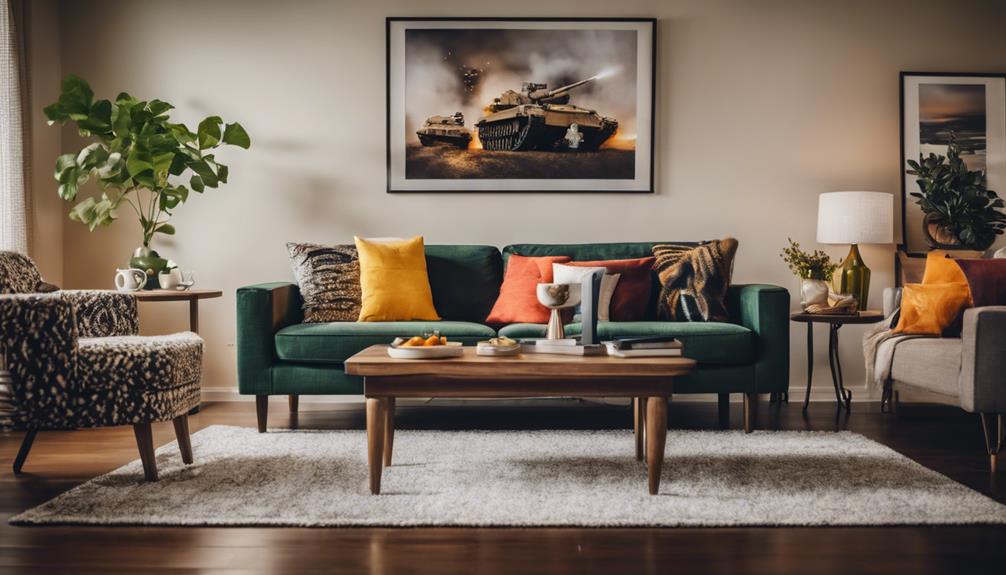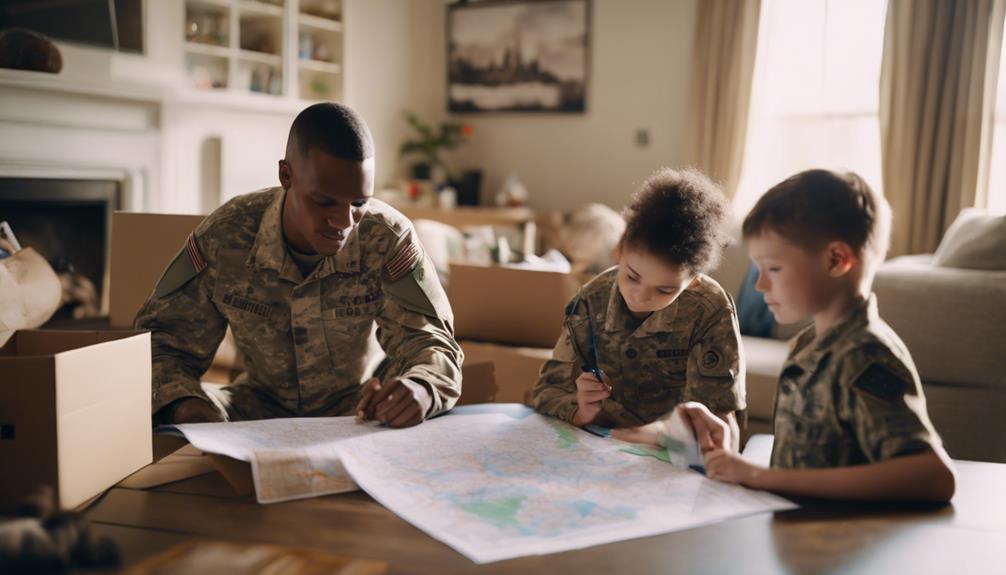Ensure a successful military move by starting with thorough preparation. Declutter your belongings to meet weight limits and organize your home room by room for easier packing. Create a PCS binder to keep track of important documents such as housing options and children’s records. Familiarize yourself with your new location by researching neighborhoods and local resources. Consider temporary housing for flexibility while you settle in, and renting furniture to simplify the transition. Engage your children in community activities for their support. Stay mindful of these strategies and you will come across even more helpful tips along the way. Connect with other military families for valuable insights and support during your move. Use online resources and forums to find useful military moving tips from experienced individuals. By staying organized and proactive, you can ensure a smooth and stress-free military relocation.
Key Takeaways
- Purge excess items and organize belongings room by room to streamline packing and adhere to weight limits.
- Build a PCS binder with essential documents, important dates, and local resources for easy reference during the relocation.
- Research housing options and familiarize yourself with the new area to ensure a smooth transition for your family.
- Explore temporary housing solutions like extended-stay hotels or rental furniture to accommodate your needs during the moving process.
Preparation for Military Relocation

Preparing for military relocation is essential, as a well-organized approach can greatly ease the change and reduce stress.
Start by purging excess items, adhering to weight limits for your household goods. Evaluate closets, garages, and attics to identify what you really need. Consider organizing a garage sale or donating items for tax benefits.
Next, prepare your home for the packers by organizing room by room. Use zippered bags for small items and large, lidded tubs for linens and clothes. Protect your shoes in plastic bins to prevent damage.
Group like items together to streamline the process. By taking these steps, you'll set yourself up for a smoother change and minimize potential chaos during your move.
Building Your PCS Binder
A well-organized PCS binder can serve as your essential roadmap during military relocation, ensuring you have all vital documents and information at your fingertips.
Start by creating sections for housing, utilities, travel, and temporary lodging. Keep your children's immunizations, school records, and pet vaccinations easily accessible.
Don't forget to include a master calendar of important dates, so you stay on track. Use pockets to store receipts and business cards, making it easier to reference them later.
If you need guidance, check out Bridget Carlson's tutorial on creating an effective PCS binder.
Understanding Your New Location

After organizing your PCS binder, it's important to research and understand the new location you'll be moving to.
Start by exploring housing options both on and off base. Look into neighborhoods that fit your family's needs, considering factors like traffic, commute times, schools, and shopping amenities. It's helpful to weigh the pros and cons of each area to make an informed decision.
Don't forget to check local resources tailored for military families, which often provide insights on community support and activities. Familiarizing yourself with the area's culture, recreational opportunities, and essential services will ease your adjustment and help you feel more at home once you arrive.
This knowledge will empower you to settle in more smoothly.
Temporary Housing Options
Exploring temporary housing options can provide you with flexibility and comfort during your change. Extended-stay hotels are a popular choice, offering amenities like kitchens and laundry facilities for longer stays.
If you prefer more space, consider short leases on furnished or unfurnished apartments. While furnished options save you time and effort, unfurnished places might require additional furnishing assistance.
Temporary housing typically lasts several weeks, giving you time to settle into your new environment. Companies like CORT specialize in providing tailored solutions for military families, ensuring you have everything you need to feel at home quickly.
Research your options thoroughly and choose what best fits your family's needs during this adjustment phase.
Supporting Children in Transition

Supporting children during a military relocation involves open communication and preparation to help them navigate the emotional challenges of moving. Discuss the move with your children well in advance, allowing them to express their feelings and ask questions.
Here are some effective strategies to support them:
- Visit favorite spots to say goodbye.
- Highlight exciting aspects of the new location, like schools and activities.
- Create a countdown calendar for the move.
- Encourage them to make a memory book of special moments.
Engaging Kids in Activities
Engaging your kids in local activities can make the moving process more enjoyable and help them settle into their new environment.
Look for community centers, sports teams, or art classes where they can meet peers and explore interests.
Check out local parks for recreational programs or outdoor events that encourage socialization.
Libraries often host reading programs and activities tailored for different age groups, providing a comforting routine.
Encourage your kids to participate in school clubs or after-school activities, which can foster friendships and a sense of belonging.
The sooner they get involved, the quicker they'll adapt.
Furniture Rental Solutions

When relocating, renting furniture can simplify your move and provide immediate comfort in your new home. Furniture rental services like CORT offer flexible solutions tailored to military families.
Here are some benefits you can enjoy:
- Convenience: Skip the hassle of moving heavy furniture.
- Flexibility: Choose short-term or long-term rental options based on your needs.
- Complete Packages: Get everything from beds to kitchen essentials in one go.
- Cost-Effective: Avoid the expenses of purchasing new furniture for temporary housing.
Ongoing Support Resources
Ongoing support resources are available to help you navigate the challenges of military relocation and guarantee a smooth changeover.
You can tap into insightful articles covering topics like moving tips and home decor trends, which can ease your adjustment. CORT's social media and blogs provide ongoing support, inspiration, and practical advice.
If you have questions, check out the FAQ section for common inquiries. For direct assistance, reach customer support via Twitter @CORThelp or call the toll-free number at 1.888.360.2678. International inquiries can be directed to 1.512.360.2678.
Utilizing these resources not only simplifies your move but also connects you with a community ready to support you through every step of the process.
Conclusion
As you commence this new adventure, think of your military relocation as a journey through uncharted waters.
With your PCS binder as your compass and your family by your side, you're well-equipped to navigate any challenges ahead.
Embrace the change, explore your new surroundings, and let the excitement of fresh opportunities light your path.
Remember, every move is a chance to grow, and soon enough, you'll find your footing in this vibrant new chapter of life.









